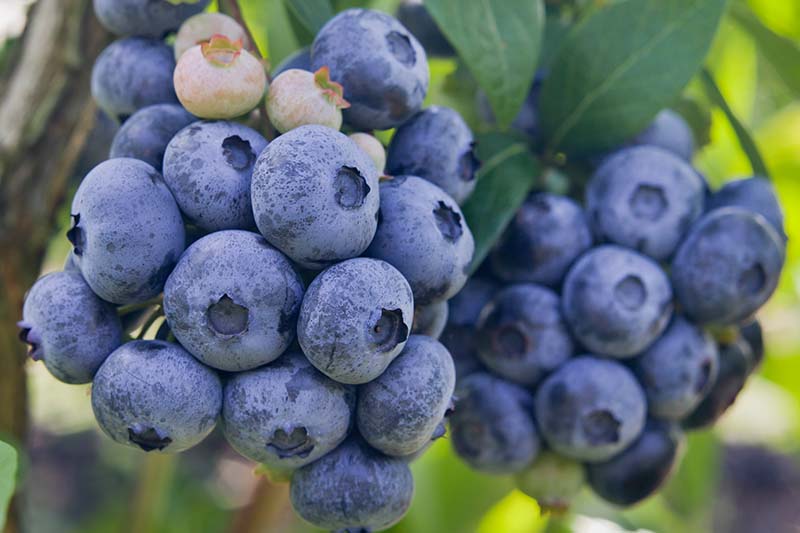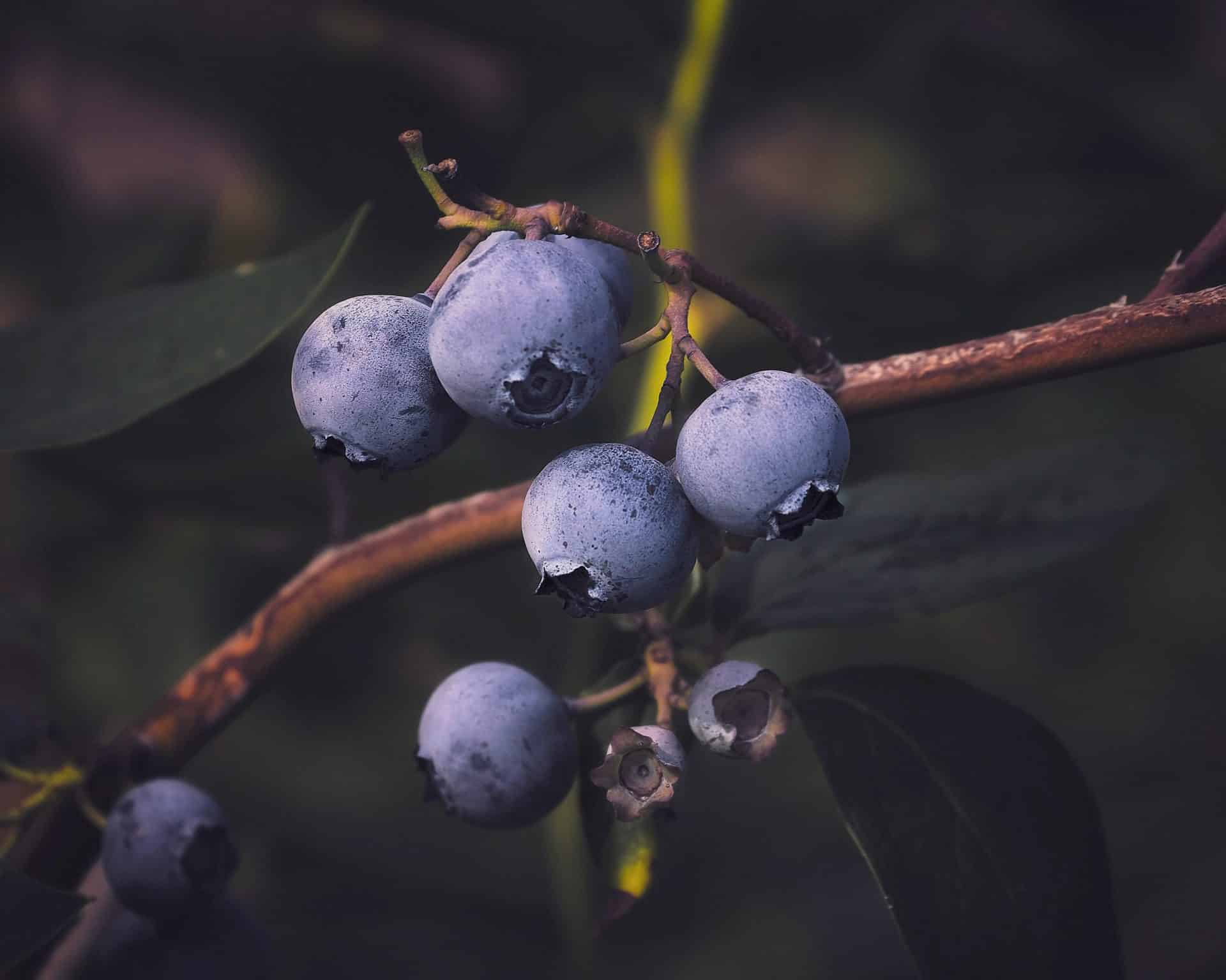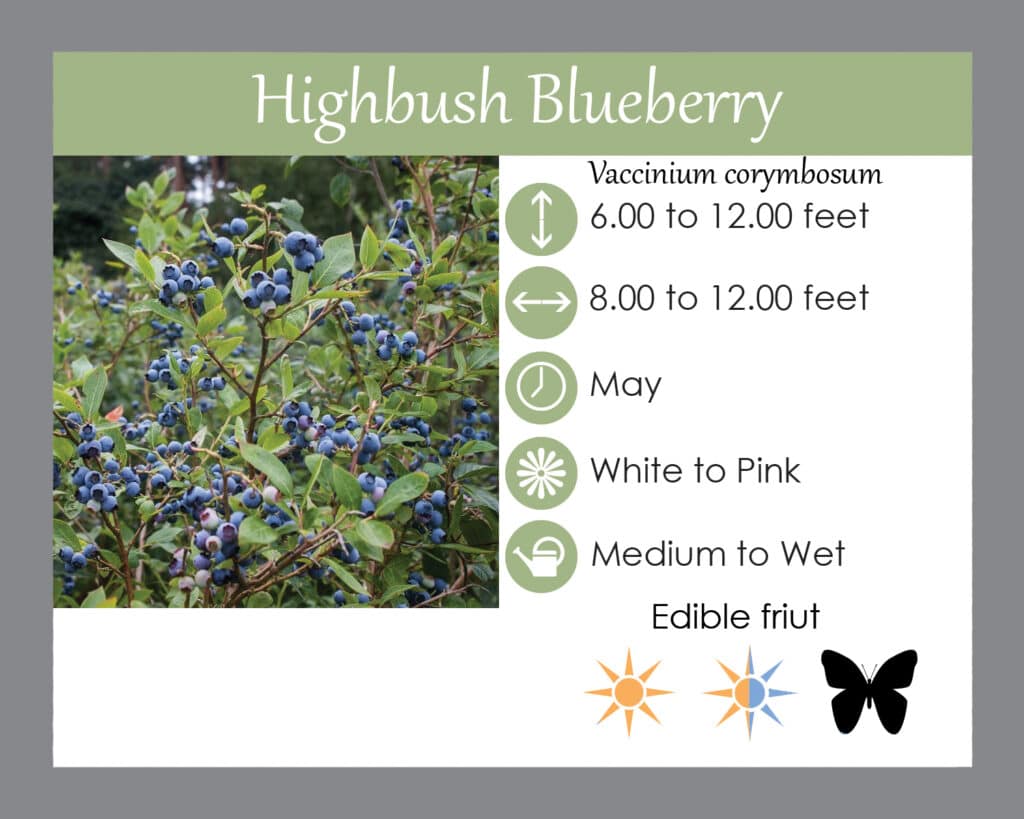
Fruit set of Highbush blueberry (Vaccinium corymbosum).
This week LGS’s Native Plant Spotlight features the Highbush Blueberry (Vaccinium corymbosum). Technically speaking, there is a second blueberry native to Maryland: the Lowbush Blueberry (V. angustifolium). However, Maryland and Virginia are really on the southern edge of the range for that one. Blueberries are a well loved summer berry, available year round in the grocery store as well as seasonally in your garden.
The Highbush blueberry has a dense, shrubby habit, and regularly grows between 5′ to 8′ height and spread, though it may reach as much as 12′ in height and width. As a result of the shrub’s shallow roots, it appreciates moist, acidic soils that are high in organic matter. Hence it does well in bogs, swamps, and low moist areas. Blueberries will grow in full sun or partial shade. Interestingly, although this species can self pollinate, the fruit set is more abundant and contains larger fruits when cross pollinated with a different variety. Therefore, planting more than one variety is recommended if you are hoping to harvest berries.
Birds love blueberries
The fruit-bearing shrubs will attract a variety of resident and migratory birds, including some summer specialties like Orioles. This provides necessary calories for migration and nesting season activities. In addition to birds loving blueberries, so do rabbits, deer, and other mammals (and who can blame them!). It is best to net the plant before the onset of fruit, particularly if it is intended solely for human consumption.
As with many species that provide large edible fruits, V. corymbosum is susceptible to several problems such as blights and fungi, as well as pests. In general, healthy and vigorous strands of these shrubs can usually withstand a small outbreak and many pests can be treated with organic treatments such as neem oil. Yellowing of the leaves may occur if the soil pH is too high, but this can be corrected through soil amendments.
Maryland native Highbush blueberry is available for purchase in person at our nursery or in our online store here.
LGS Staff Notes
Jessica: I have one of these at the edge of my property that has attained tree-like proportions. The berry-picking record from the previous homeowner was 7 pints in one season, although it was a battle with the birds!
Amy: I love using blueberries in the landscape because they provide high wildlife value and have such a striking, intensely red-orange fall color. I always consider it a bonus if I get to enjoy a few berries before the birds do!
Like us on Facebook
Follow us on Instagram



